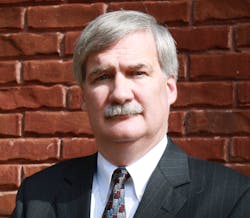Everybody makes a wrong turn now and then on a project. Most of the time you can correct the wrong turn and get the project back on track pretty easily. Sometimes it’s a lot harder to get the project back on track, and sometimes the project can’t be recovered at all.
Of course, the best approach is not to make a wrong turn at all, but that’s a lot easier said than done. So I thought I would give you a few ideas that might help you avoid a wrong turn or at least make the wrong turn a lot smaller and easier to correct.
First, align the project with the business on day one. The project has to be something that actually has a positive impact on the business, and it has to be something that the business actually needs and wants.
Get the functional and technical requirements right. Don’t skip the requirements—even if the business thinks they know what they want, and even if you think you know what they want. Do your homework and make sure you get the functional and technical requirements right. Don’t skimp on this. Make sure you get it right.
Control the technology, product and solution selection so that you don’t get “sold” the wrong thing. Don’t listen to the vendors trying to sell you the latest technology. Don’t listen to the IT department telling you that the corporate standard is such and such. Don’t listen to the business people telling you they just want this cool new software. Make sure you get the technology and/or software stuff right so you’re using the right solution for the right problem and you’re keeping the solution in the “sweet spot.”
Plan and analyze the project, scope, schedule, resources and risks. Again, don’t skimp on this and don’t do it after the project’s well underway. Do it before the project starts. Make sure you get it right and make sure you get the buy-in on all this. The old cliché is true: If you fail to plan you plan to fail. And don’t forget to analyze the risks. No matter what you’re doing, there are risks there and you need to know about them.
Once you’ve got the project planned out, follow good project management practices. This is just Project Management 101—the basic blocking and tackling. But if you don’t do it, it will come back to bite you. You don’t have to go overboard on this; you can make sure that the level of project management matches the size of the project. But don’t eliminate this.
Implement some processes that make sure that the project maintains alignment with the business throughout the project lifecycle. If the project is going to take some months, there’s a good chance that things are going to change. You’re probably aiming at a moving target, so make sure you have the processes in place to deal with these changes. Changes are all part of the business.
Implement program management best practices for larger projects. If you’re doing a larger project, the communications paths go up exponentially. That’s just the way it is. So use the right kind of program and project management to deal with the size and duration of the project.
If you can implement these ideas, I think it will go a long way to helping you avoid the wrong turns. And if you do make a wrong turn, it’ll make it a lot easier to get it straightened out.
I hope these ideas help. Good luck!
>>John Clemons is director of manufacturing IT for Maverick Technologies. He is on the MESA Americas Board of Directors and is chair of the MESA Marketing Committee.
About the Author
John Clemons
Director of Manufacturing IT for Maverick Technologies

Leaders relevant to this article:
